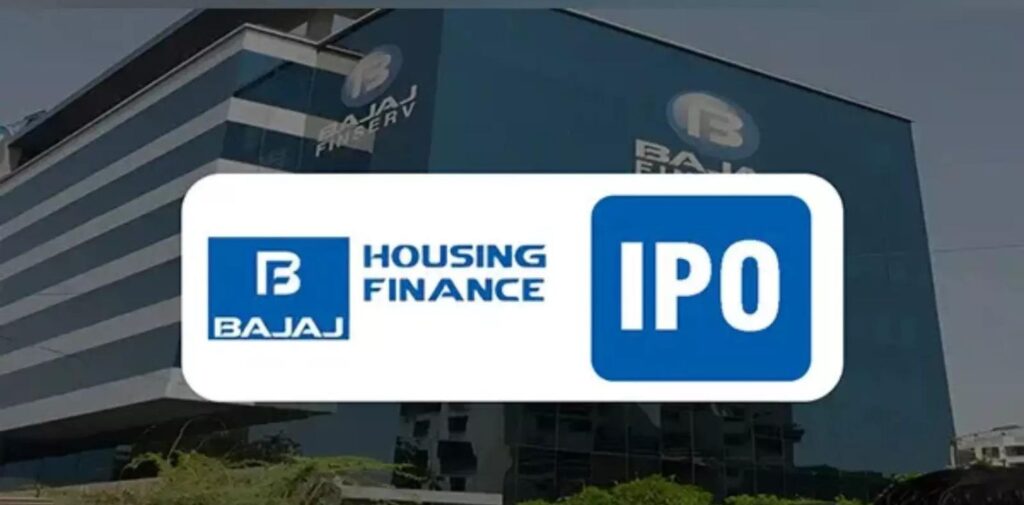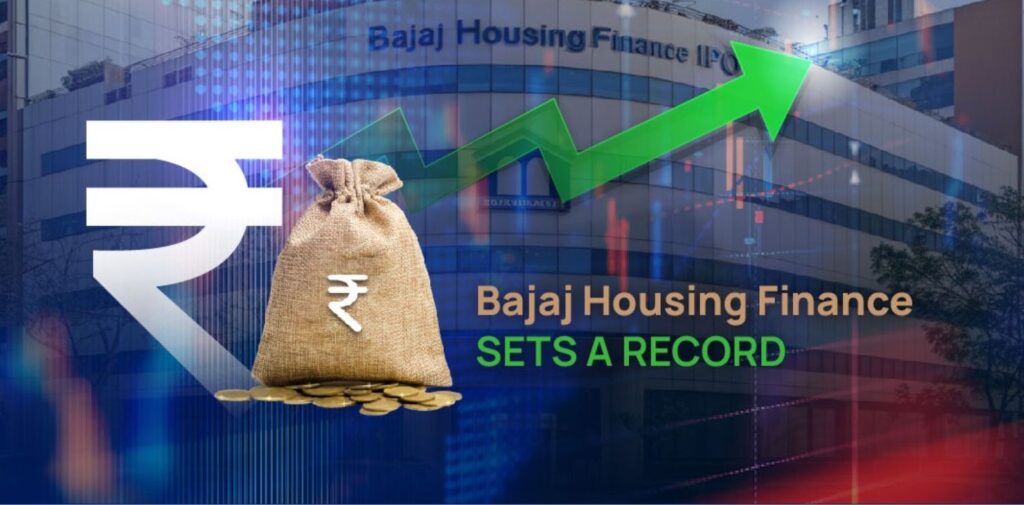Bajaj Housing Finance has created a buzz in the financial world by making a grand debut in the stock market. The company’s shares were listed at ₹2,150 apiece on the National Stock Exchange (NSE), reflecting a massive 114% premium from its issue price of ₹770. This stellar performance catapulted the company into the prestigious ₹ 1 trillion club, making it one of the few companies in India to achieve this milestone in such a short period. This article delves into the key factors behind this remarkable listing, the impact on investors, and the broader implications for the housing finance sector in India.
The Journey of Bajaj Housing Finance to the ₹1-Trillion Club
Bajaj Housing Finance, a subsidiary of Bajaj Finance Limited, has steadily built a reputation as one of the most reliable players in the housing finance market. Its parent company, Bajaj Finance, is already a household name in the Indian financial services sector, known for its robust growth and diverse portfolio. Bajaj’s journey has been no less impressive. The company offers a range of housing finance solutions, including home loans, loans against property, and construction finance, catering to a wide audience across India.

The IPO (Initial Public Offering) of Bajaj Housing Finance created significant excitement among investors. The issue price was set at ₹770 per share, but the demand for shares far exceeded expectations. When the company’s shares debuted on the NSE, they were listed at ₹2,150, marking a 114% increase from the issue price. This surge pushed the market capitalization of the company beyond ₹1 trillion, placing it in an elite group of Indian companies that have achieved this valuation.
Why the Bumper Listing?
Several factors contributed to the spectacular listing of Bajaj Housing Finance:
Strong Brand Value of Bajaj Group: Bajaj is a well-established brand in India, known for its diversified business interests ranging from two-wheelers to financial services. The strong reputation of Bajaj Finance, the parent company, played a crucial role in boosting investor confidence in Bajaj Housing Finance. Investors were optimistic that the housing finance arm would replicate the success of Bajaj Finance, which has consistently delivered high returns.
Robust Financial Performance: Bajaj Housing Finance has shown impressive growth in recent years. The company’s financials have remained strong, with a steady increase in revenue and profits. It has also maintained a low non-performing asset (NPA) ratio, which indicates efficient loan disbursal and recovery mechanisms. These factors made the company an attractive investment opportunity, particularly in the housing finance sector, which is poised for growth in India.
Growing Demand for Housing Finance: India’s housing finance market is witnessing significant expansion, driven by the rising demand for affordable housing, increasing urbanization, and government initiatives such as Pradhan Mantri Awas Yojana (PMAY). Bajaj Housing Finance, with its diversified product offerings and strong distribution network, is well-positioned to benefit from this growing demand. Investors saw potential in the company’s ability to tap into this expanding market, which contributed to the heightened interest during its IPO.
Favorable Market Conditions: The timing of the listing also played a role in its success. Indian stock markets have been performing well, with indices like the NSE and BSE reaching record highs. The overall bullish sentiment in the market, coupled with high liquidity, created a favorable environment for Bajaj Housing Finance’s IPO. Investors, both retail and institutional, were keen to capitalize on the positive momentum, leading to the bumper listing.
Investor Confidence in Housing Finance: Housing finance companies in India have shown resilience, even during economic downturns. The real estate sector, which had faced challenges in the past, is now recovering, thanks to low interest rates and increased demand for homes. Investors believe that housing finance companies like Bajaj Housing Finance will play a crucial role in supporting this recovery by providing affordable home loans and other financial solutions. This optimism was reflected in the overwhelming response to the company’s IPO.
The Impact on Investors
For investors who participated in the IPO, the listing of Bajaj Housing Finance has been nothing short of a windfall. Those who purchased shares at the issue price of ₹770 have seen the value of their investment more than double, with the shares listing at ₹2,150. This represents a 114% gain in a single day, making it one of the most successful IPOs in recent times.

Retail investors, in particular, have benefited from this bumper listing. Many retail investors were allotted shares during the IPO, and the significant premium at listing has provided them with substantial returns. Institutional investors, who often take a long-term view, are also optimistic about the company’s growth prospects and are likely to hold on to their shares for further appreciation.
Broader Implications for the Housing Finance Sector
The success of Bajaj Housing Finance’s listing has broader implications for the housing finance sector in India. It signals a strong recovery in investor sentiment toward the real estate and housing finance markets, which had been subdued in the past due to factors like demonetization, the implementation of RERA (Real Estate Regulation and Development Act), and the COVID-19 pandemic.
Increased Investor Interest: The success of this IPO is likely to attract more investor interest in housing finance companies. Other players in the market, such as HDFC and LIC Housing Finance, may see a boost in their stock prices as a result of the renewed optimism in the sector. Additionally, smaller housing finance companies may also find it easier to raise capital through public listings or other means, as investors become more bullish on the sector.

Boost to the Real Estate Sector: The performance of housing finance companies is closely tied to the real estate sector. As more people seek home loans, the demand for residential properties is likely to increase. This could lead to a revival in the real estate sector, which has been gradually recovering from the impact of previous regulatory changes and the pandemic. A thriving real estate market, in turn, will benefit housing finance companies by driving demand for their products.
Encouragement for Future IPOs: The success of Bajaj Housing Finance’s IPO may encourage other companies in the financial services sector to go public. The strong response from investors indicates that there is ample appetite for high-quality companies with solid fundamentals. This could lead to a wave of new IPOs in the coming months, particularly from housing finance companies and other financial services firms.
Conclusion
Bajaj Housing Finance’s entry into the ₹1-trillion club after a bumper listing is a testament to the company’s strong fundamentals, the reputation of the Bajaj brand, and the growing demand for housing finance in India. For investors, the IPO has provided substantial returns, and for the housing finance sector, it has renewed confidence and optimism.
As the company continues to grow and capitalize on the opportunities in the housing finance market, it is well-positioned to remain a key player in India’s financial landscape. The success of its listing is likely to have a positive ripple effect on the broader financial and real estate sectors, creating more opportunities for investors and homebuyers alike.




